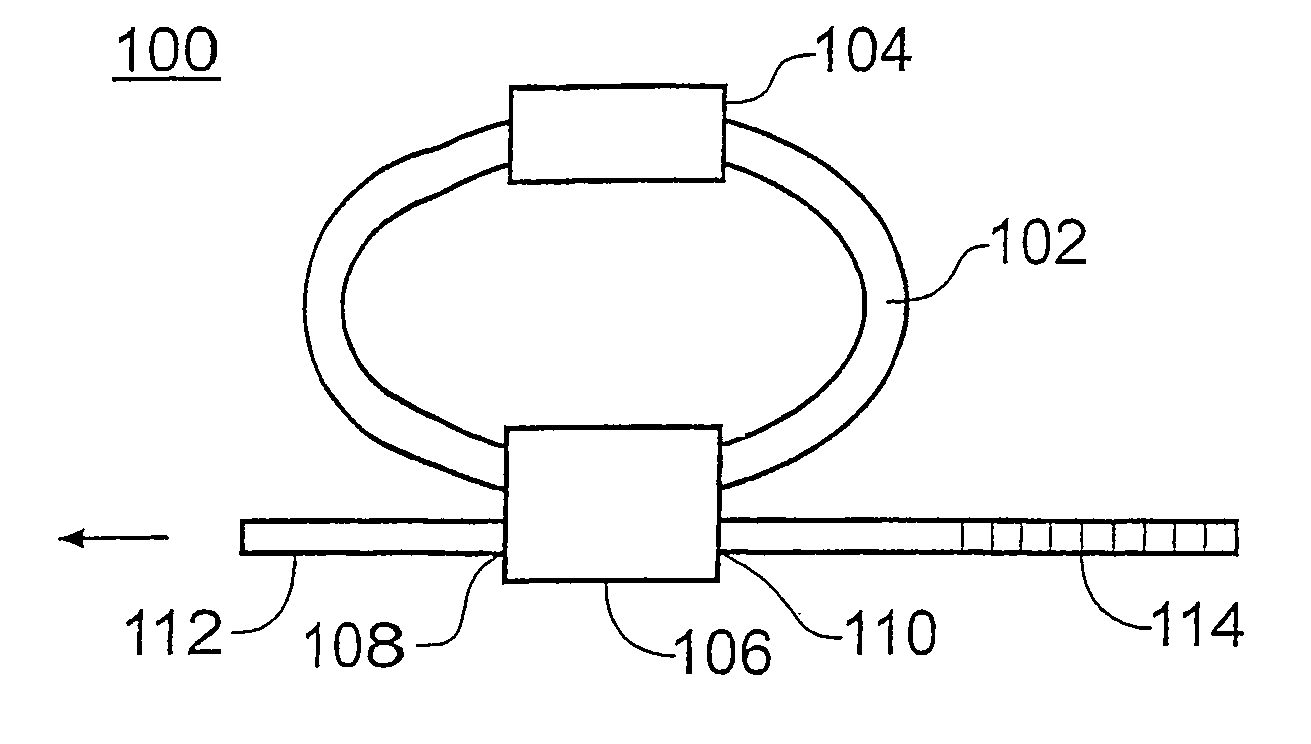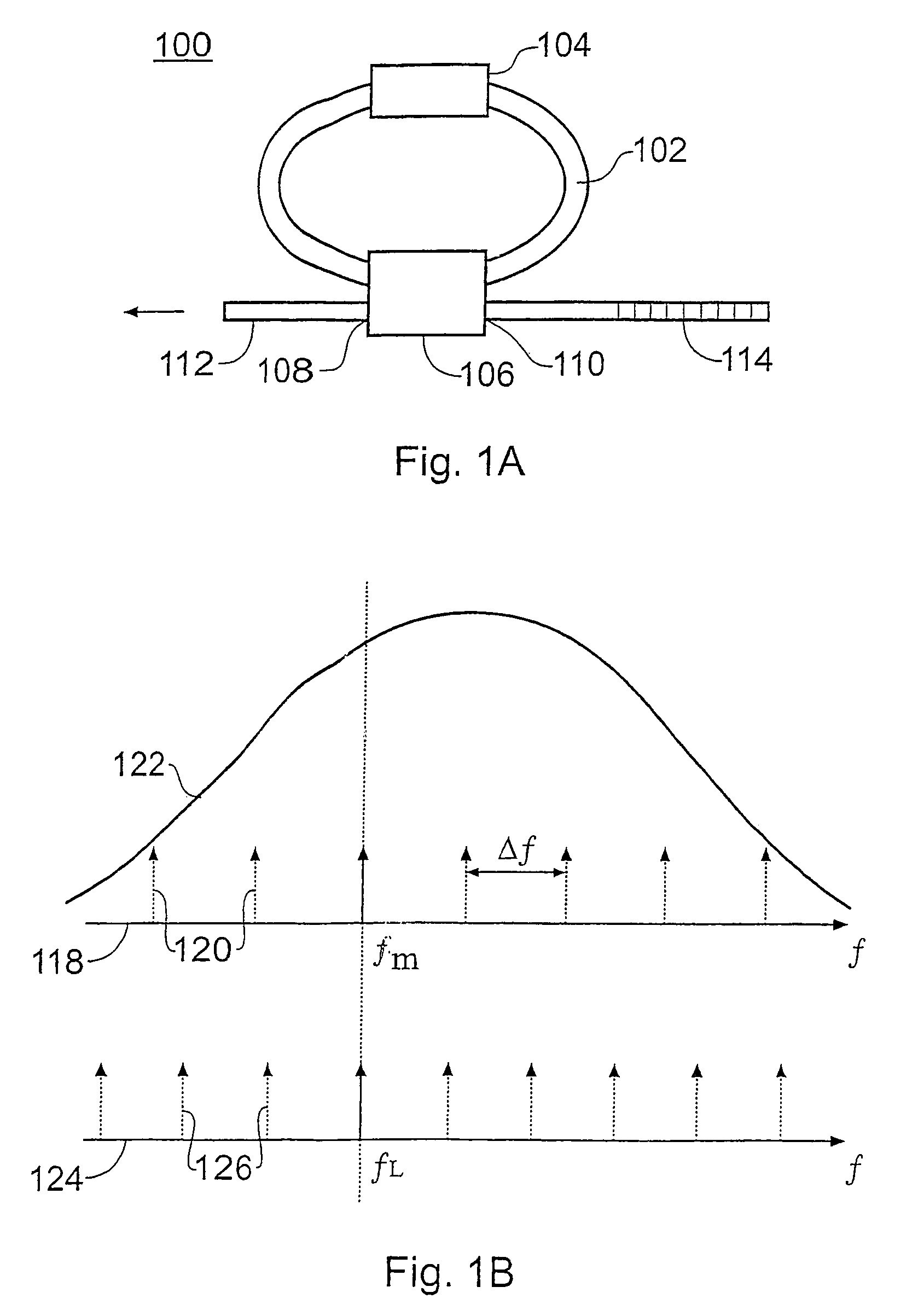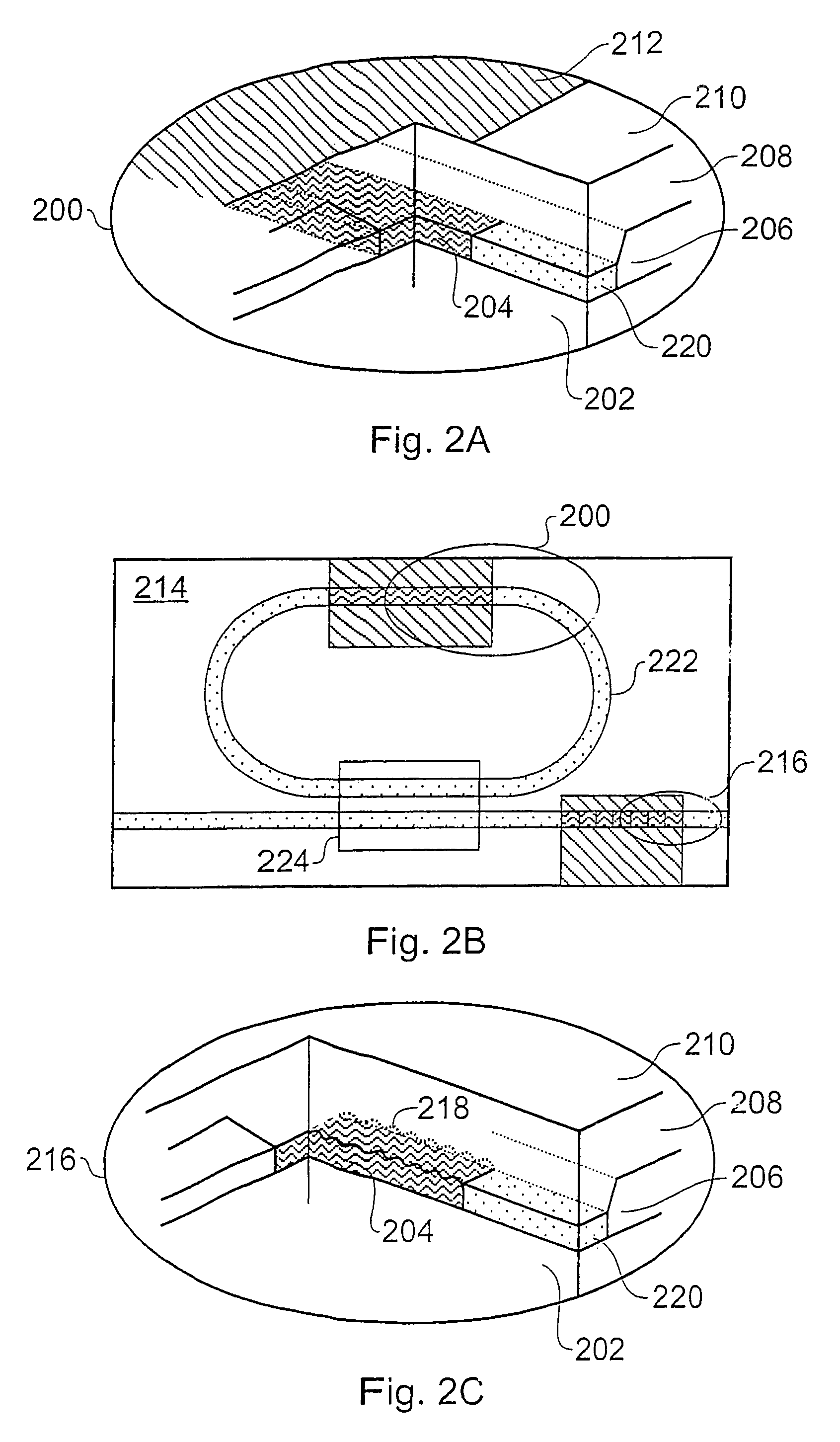Tunable ring laser with external grating operation in a single mode
a tunable ring laser and single mode technology, applied in the field of tunable ring lasers and lasing devices, can solve the problems of insufficient tuning speed for efficient operation, complicated tuning, limited smsr of less than 25 db for y-cavity lasers, etc., to achieve high speed tuning, reduce the time required for the tunable laser to change between different emitted frequencies, and improve the effect of accuracy
- Summary
- Abstract
- Description
- Claims
- Application Information
AI Technical Summary
Benefits of technology
Problems solved by technology
Method used
Image
Examples
Embodiment Construction
[0027]In the tunable laser 100 of FIG. 1A, a ring cavity 102 (comprised of a passive optical waveguide) and an optical gain element 104 are connected to a bi-directional optical output coupler 106. The optical output coupler 106 has a first port 108 and a second port 110. The first port 108 is coupled to an output optical fibre 112 and a second port 110 is coupled to a frequency selection means 114 (such as a grating).
[0028]In operation, the optical gain element 104 provides optical gain within a predetermined spectral range and the ring cavity 102 provides a propagation route for circulating photons at one or more frequencies within the predetermined spectral range. A laser oscillation in the ring cavity 102 occurs at a laser frequency within the gain spectral range when two operating conditions are met. First, the total optical gain at that laser frequency fL exceeds the total optical loss in the ring cavity 102, and second, the optical phase delay associated with a round trip of ...
PUM
 Login to View More
Login to View More Abstract
Description
Claims
Application Information
 Login to View More
Login to View More - R&D
- Intellectual Property
- Life Sciences
- Materials
- Tech Scout
- Unparalleled Data Quality
- Higher Quality Content
- 60% Fewer Hallucinations
Browse by: Latest US Patents, China's latest patents, Technical Efficacy Thesaurus, Application Domain, Technology Topic, Popular Technical Reports.
© 2025 PatSnap. All rights reserved.Legal|Privacy policy|Modern Slavery Act Transparency Statement|Sitemap|About US| Contact US: help@patsnap.com



